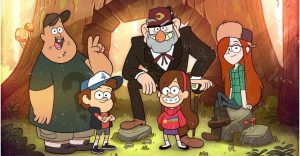There’s A Big Secret Behind This Hubble Photo Of Two Beautiful Galaxies

NASA recently shared a new Hubble photo of two galaxies appearing to interact with each other. In reality, though, that couldn’t be further from the truth. Outer space can be extremely perplexing at times. Whether astronomers are following a strange nebula, examining a new galaxy, or trying to explain the shape of a ‘potato’ planet, there’s always some new strange thing to uncover.
Since 1990, one of the most important tools for uncovering these mystifying objects has been Hubble. The Hubble telescope may not be the newest or most advanced space telescope in 2022, but it remains an important tool for charting the universe — partly thanks to its amazing imaging capabilities. Just last week, NASA shared a Hubble photo of two ‘peculiar’ galaxies with odd behaviors and shapes. It also recently shared Hubble photos of ‘dancing’ galaxies, a space ‘chamaeleon,’ and a galaxy that looks just like the USS Enterprise. If there’s a strange entity somewhere in space, chances are Hubble has seen it.
Such is the case with this latest Hubble photo of galaxies NGC 4496A and NGC 4496B. Taking the image at face value, it’s nothing short of jaw-dropping. The two galaxies take up almost the entirety of the picture. You can see their bright white centers, huge clumps of space gas surrounding them, and amazing spots of pink and blue from countless stars. The two galaxies also appear to be interacting with each other. There’s one galaxy towards the bottom, one right above it, and they appear to be side by side. Right?
These Two Galaxies Are Nowhere Near Each Other

As it would turn out, that’s not actually the case at all. Although they look like they’re within spitting distance of each other, NGC 4496A and NGC 4496B are separated by millions of light-years. NGC 4496A resides 47 million light-years from Earth, whereas NGC 4496B is a whopping 212 million light-years from Earth. It’s very similar to an earlier Hubble photo of NGC 105 and its ‘neighboring’ galaxy. NGC 105 looks like it’s right next to another galaxy. Just like with NGC 4496A and NGC 4496B, however, the two are nowhere near one another.
How in the world does this happen? It all comes down to perspective and alignment. NGC 4496A and NGC 4496B may not be near each other, but because of the way they’re positioned and how they’re placed in relation to Hubble, the photo makes it appear that they are. Not only does this create a stunning image, but it also has tangible benefits for astronomers studying the galaxies. As NASA explains, “Chance galactic alignments such as this provide astronomers with the opportunity to delve into the distribution of dust in these galaxies… By carefully measuring how dust in the foreground galaxy affects starlight from the background galaxy, astronomers can map the dust in the foreground galaxy’s spiral arms.” After creating a ‘dust map’ like this, astronomers can more accurately determine types of stars in the galaxies, their distance from other objects, and more. Therein lies why Hubble is so special. Taking a pretty picture is one thing, but providing astronomers with valuable data about the universe can have lasting benefits for years to come.
Source: NASA
About The Author


















